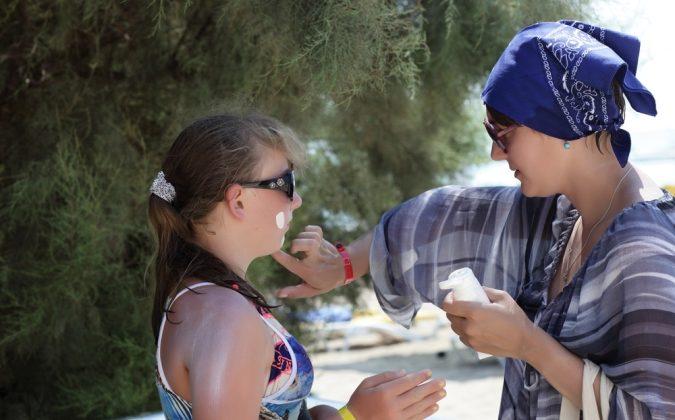Melanin is known to protect the skin by blocking harmful ultraviolet radiation (UV) light. Now, a new study shows it may have carcinogenic effects as well.
Exposure to UV light from the sun or from tanning beds can damage the DNA in melanocytes, the cells that make the melanin that gives skin its color. This damage is a major cause of skin cancer, the most common form of cancer in the United States.
Experts had believed that melanin protected the skin by blocking harmful UV light. But there is also evidence suggesting that melanin is associated with skin cell damage.
Good and Bad Effects
In the current study, published in the journal Science, researchers first exposed mouse and human melanocyte cells to radiation from a UV lamp. The radiation caused a type of DNA damage known as a cyclobutane dimer (CPD), in which two DNA “letters” attach and bend the DNA, preventing the information it contains from being read correctly.
To the researchers’ surprise, the melanocytes not only generated CPDs immediately but continued to do so hours after UV exposure ended. Cells without melanin generated CPDs only during the UV exposure.
This finding shows that melanin had both carcinogenic and protective effects, said Douglas E. Brash, clinical professor of therapeutic radiology and dermatology at Yale School of Medicine.
“If you look inside adult skin, melanin does protect against CPDs. It does act as a shield. But it is doing both good and bad things.”
‘Evening-After’ Sunscreen
The researchers next tested the extent of damage that occurred after sun exposure by preventing normal DNA repair in mouse samples. They found that half of the CPDs in melanocytes were “dark CPDs”—CPDs created in the dark.
In searching for an explanation of these results, Sanjay Premi, associate research scientist at the Brash laboratory, discovered the UV light activated two enzymes that combined to “excite” an electron in melanin.
The energy generated from this process—known as chemiexcitation—was transferred to DNA in the dark, creating the same DNA damage that sunlight caused in daytime. Chemiexcitation has previously been seen only in lower plants and animals.
Even though the news of the carcinogenic effect of melanin is disconcerting, researchers said there is a ray of hope: the slowness of chemiexcitation may allow time for new preventive tools, such as an “evening-after” sunscreen designed to block the energy transfer.
Other researchers from Yale and from Fujita Health University School of Health Sciences in Japan, Universidade de São Paulo in Brazil, and Commissariat à l'Energie Atomique in France are co-authors of the study, which was supported in part by the Department of Defense and the National Institutes of Health.
Ziba Kashef is a senior communications officer for Yale University. This article was reprinted from Yale University via Futurity.org.
*Image of sunscreen use via Shutterstock
